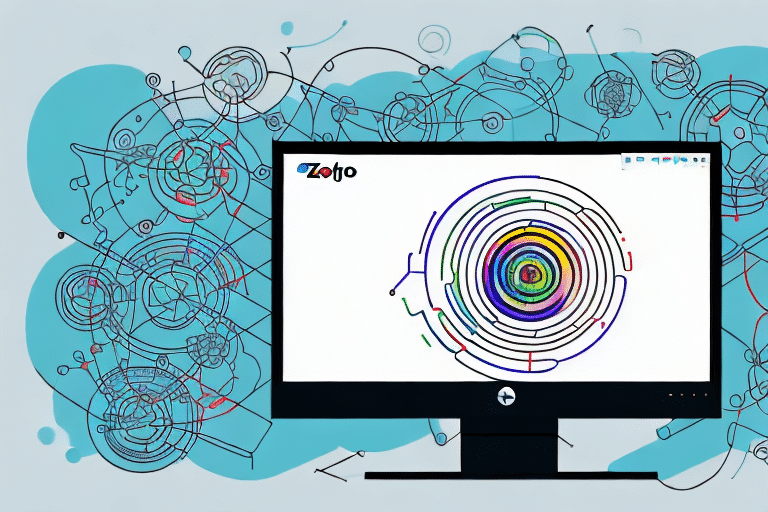Introduction to UPS Integration with Zoho Books
Efficient shipping management is crucial for business owners aiming to streamline operations and enhance customer satisfaction. Integrating Zoho Books with UPS offers a seamless solution to manage shipping processes, reduce errors, and save valuable time. This guide delves into the benefits, steps, optimization techniques, and best practices for leveraging UPS integration within Zoho Books.
Benefits of Integrating UPS with Zoho Books
Streamlined Shipping Process
Integrating UPS with Zoho Books centralizes your shipping data, allowing you to manage orders, generate shipping labels, and track shipments directly from the platform. This consolidation eliminates the need to toggle between multiple applications, enhancing efficiency and reducing the likelihood of errors.
Real-Time Shipment Tracking
With UPS integration, you can monitor your shipments in real-time within Zoho Books. This provides greater control and visibility, enabling you to proactively address any delivery issues. According to a Statista report, real-time tracking significantly boosts customer satisfaction by keeping them informed about their order status.
Automated Label Generation and Invoicing
The integration allows automatic generation of shipping labels and invoices, minimizing manual input and errors. This automation ensures that inventory and accounting records are consistently updated, maintaining accurate financial and stock data.
Enhanced Customer Experience
Providing customers with real-time shipping information, including tracking numbers and estimated delivery dates, improves transparency and trust. Automated email notifications keep customers informed, reducing inquiries and enhancing overall satisfaction.
Step-by-Step Guide to Connecting UPS with Zoho Books
1. Authenticate Your UPS Account
Begin by authenticating your UPS account within Zoho Books. Navigate to the integrations section in Zoho Books, select UPS, and enter your UPS credentials to establish a secure connection.
2. Map Shipping Data
Once authenticated, map your shipping data, including shipping labels, tracking numbers, and other relevant information. This ensures that all shipping activities are accurately reflected in Zoho Books.
3. Customize Shipping Preferences
Set up your shipping preferences by configuring rates, delivery options, and packaging details. Zoho Books offers customizable settings to align with your business needs.
4. Test the Integration
Before fully implementing, perform a test integration to ensure that data flows correctly between UPS and Zoho Books. Address any discrepancies or issues that arise during testing.
5. Utilize Zoho Books Support
If you encounter challenges during the integration process, leverage Zoho Books' support resources or contact their customer service for assistance.
Optimizing UPS Integration for Enhanced Shipping Management
Automate Label Printing
Set up rules within Zoho Books to automate the printing of shipping labels based on predefined criteria such as order volume or destination. This reduces manual effort and speeds up the shipping process.
Enable Automatic Tracking Updates
Activate automatic tracking updates to keep both your team and customers informed about shipment statuses in real-time. This feature enhances transparency and reduces the need for manual status checks.
Implement Shipping Rules
Define shipping rules based on factors like weight, destination, and delivery speed. This ensures that the most cost-effective and efficient shipping options are selected for each order.
Regularly Review Shipping Data
Conduct periodic reviews of your shipping data to identify trends, inefficiencies, and opportunities for improvement. Data-driven insights can inform strategic decisions to optimize your shipping operations.
Utilize Address Validation
Use Zoho Books' address validation feature to ensure that shipping addresses are accurate and complete, minimizing delivery errors and delays.
Schedule UPS Pickups
Take advantage of UPS's pickup scheduling feature directly within Zoho Books. This allows you to arrange pickups without the need to contact UPS manually, saving time and reducing logistical hassles.
Managing Shipping Orders Efficiently
Centralized Order Management
Zoho Books allows you to manage sales orders, purchase orders, and shipping orders from a single dashboard. This centralization simplifies order tracking and management, ensuring a cohesive workflow.
Automated Shipping Rules
Configure automated shipping rules to assign carriers, select shipping methods, and determine rates based on order specifics. Automation ensures consistency and reduces the potential for human error.
Inventory and Invoice Automation
Integrate shipping activities with inventory management and invoicing. Automatically updating inventory levels and generating invoices upon shipment ensures accurate record-keeping and financial tracking.
Best Practices for Tracking and Monitoring UPS Shipments
Set Up Automatic Tracking Updates
Enable automatic tracking updates to receive real-time notifications about shipment statuses. This feature keeps you informed and allows for timely responses to any delivery issues.
Regularly Monitor Shipment Progress
Consistently track the progress of your shipments to identify and address any delays or complications promptly. Regular monitoring ensures that your shipping operations remain efficient and reliable.
Establish Exception Notifications
Configure notifications for exceptions such as delivery delays, failed deliveries, or other issues. Immediate alerts enable swift corrective actions, maintaining customer satisfaction.
Troubleshooting Common UPS Integration Issues
Common Integration Problems
Issues like mismatched shipping labels, incorrect tracking information, and lost packages can arise during UPS integration. Identifying and resolving these problems is essential for maintaining seamless operations.
Resolving Integration Errors
Often, integration issues stem from incorrect settings or configurations within Zoho Books or UPS. Double-checking your integration settings and ensuring compatibility can prevent many common errors.
Utilize Support Resources
When faced with persistent issues, consult Zoho Books' support documentation or reach out to their customer service team for expert assistance.
Customizing UPS Settings to Fit Your Business Needs
Personalize Shipping Options
Adjust shipping options, rates, and labels within Zoho Books to align with your brand identity and business requirements. Customized settings enhance the customer experience and streamline internal processes.
Set Up Alerts and Notifications
Create alerts for specific events or exceptions in your shipping process. Proactive notifications help you stay informed and respond to issues promptly.
Automate Default Settings
Establish default shipping options and rates to minimize manual data entry and reduce the risk of errors. Automation ensures consistency across all shipments.
Custom Label Printing
Design shipping labels that reflect your brand, creating a professional and consistent appearance for all deliveries. Custom labels contribute to a positive customer experience.
Conclusion
Integrating UPS with Zoho Books offers a comprehensive solution to manage your shipping processes efficiently. By following the outlined steps and best practices, you can optimize your shipping operations, reduce errors, and enhance customer satisfaction. For further assistance, refer to Zoho Books' support resources or consult with their customer service team to maximize the benefits of this integration.






















